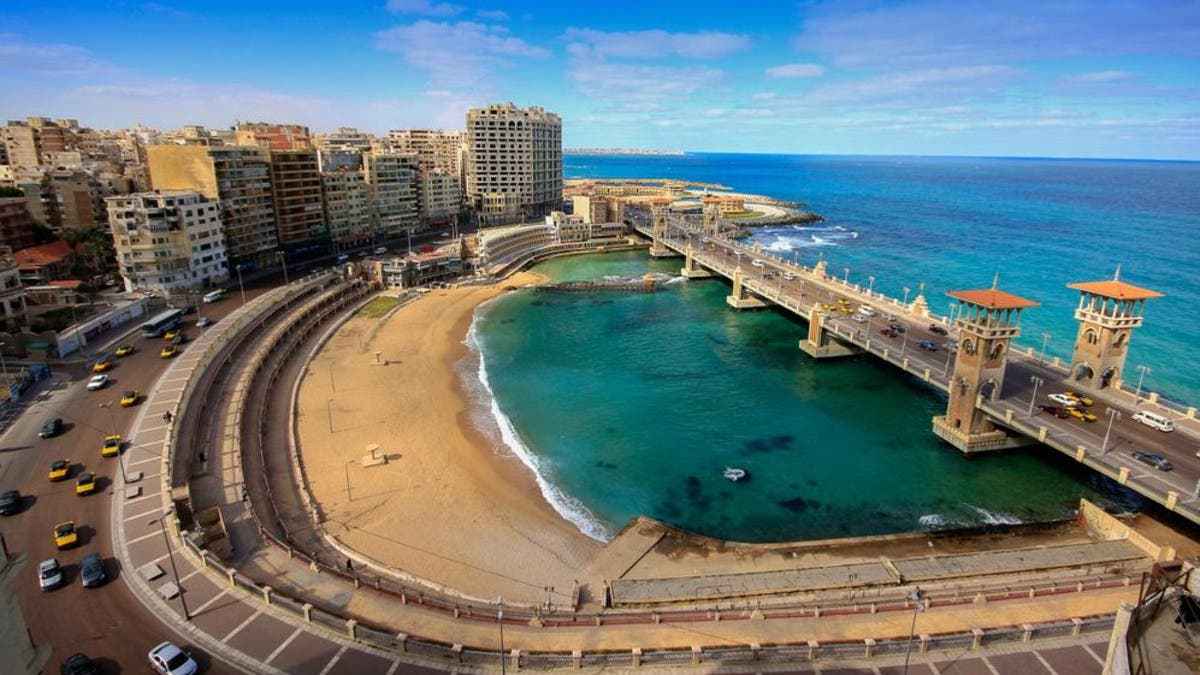A state of anxiety prevailed in Egypt following a statement by British Prime Minister Boris Johnson during his participation in the United Nations Climate Change Conference in Glasgow, Scotland. He said, “when the temperature rises only 4 degrees, we will say goodbye to entire cities, which are Miami, Alexandria, and Shanghai, they will all sink underwater.”
This warning brought back the spotlight on Egyptian and international studies and fears, which warned years ago of the danger threatening areas in Alexandria as a result of rising water levels due to increased temperatures as a result of climate change. This coincides with the existence of measures on the ground to protect the city, which the Egyptian authorities confirm that these measures have been going on for years.

Rising sea levels due to climate change threaten to inundate neighbourhoods and archaeological sites in the city of Alexandria, which has survived many disasters since its founding two thousand years ago. Despite this, experts say that there are solutions that may prevent this from happening.
Dam engineering specialists talk about two scenarios for the disappearance of Alexandria: erosion or drowning. The first is clear and well-known, while the second is still vague. There is also a third scenario for its survival, by filling large areas with sand on the beaches of the historic city.
In addition to the scenario of filling or feeding with sand, there are two other scenarios to protect Alexandria, which the government says it has been working on for years. The first scenario is technical, related to setting concrete barriers and relying on early forecast devices, while the second is environmental, and it is concerned with supporting green projects to preserve the environment and confront climate change.
According to some pessimists, the possible drowning will include all the lowlands in Alexandria, not the entire city, as it will sink under a column of water between 0.5 and 1.5 meters until the end of the current century.
This will lead to the disappearance of the beaches with a low-level east and west of Alexandria, such as “Mandara”, “Al-Montazah” and “Al-Anfoushi”, which are located at a level close to zero. This means that the waves coming from the sea will cover all the low-lying areas, which will result in a rise in the level of the (salty) groundwater to penetrate the foundations of the houses. This is in addition to its deepening over a 1 kilometre inside the city, exacerbating sewage network malfunctions, and threatening agricultural areas.
In previous years, the height of the sea waves in Alexandria did not exceed 8 meters during the worst winter storm, while we are currently hearing official numbers talking about 10 and 15 meters. In confirmation of the threat of the waves, the Governor of Alexandria, Mohamed Al-Sharif, said in a statement a few days ago that “the city was exposed to torrential rains and floods. It has been significant since 2015 and is increasing every year and leads to huge waves with storms.”
Studies by international organisations have previously warned of the danger of Alexandria drowning – including a report by the Economic Development Organization in 2009, and a study by the World Bank in 2007 – due to climate changes. This comes as the Mediterranean started to witness hurricane-like phenomena hitting the coasts of its cities.
Work is currently underway on the backfill scenario, which means replenishing the sand on its beaches with sand, just as the Netherlands did to protect its lands from drowning because it is located at sea level. This is a scenario that Egypt is already working on, as work is currently underway to protect the most critical 69 kilometres on the coast of the delta from the risks of climate change and sea-level rise.
The Egyptian state is also working on the construction of concrete blocks in the sea to reduce erosion, as part of protection projects, accompanied by green projects to protect the environment. About 60% of this project has been completed, as sand bridges have been implemented that represent 100% protection, and were formed from the dredging products of Lake Burullus, to collect sand by wind during the seasons when it blows to form dunes.
Following the statement of the British Prime Minister, Egypt’s Minister of Water Resources and Irrigation Mohamed Abdelconfirmed that the scenarios that Johnson talked about are “not surprising” and known, and there has been a plan to confront them for years, stressing that the government’s protection moves will prevent Alexandria from sinking.
Environment Minister Yasmine Fouad also revealed that more than EGP 7bn ($445m) were allocated during the past five or six years to implement protection measures on Egyptian beaches, especially Alexandria. These statements restored a lot of reassurance to the souls of Egyptians and non-Egyptians who are in love with the saffron soil of Alexandria.
Dr Hatem Sadek is a Professor at Helwan University


